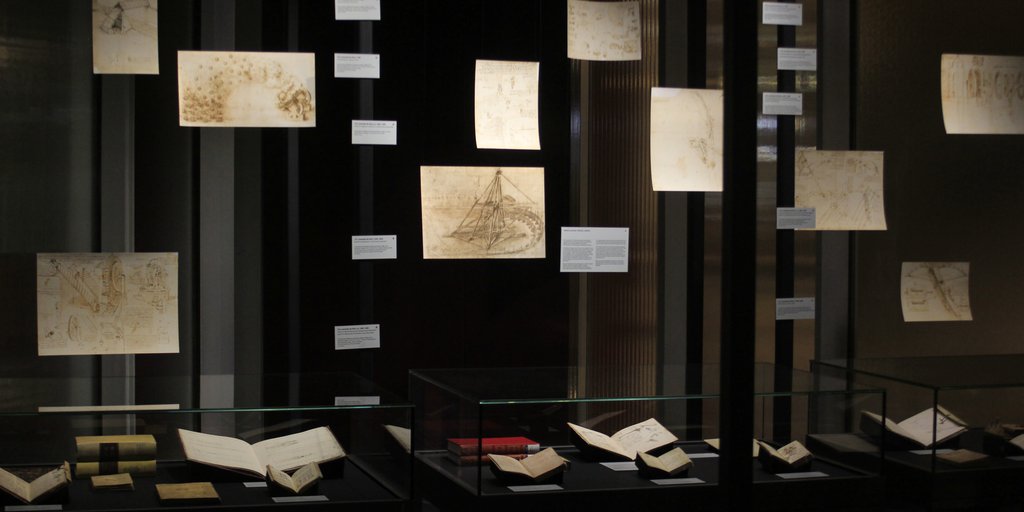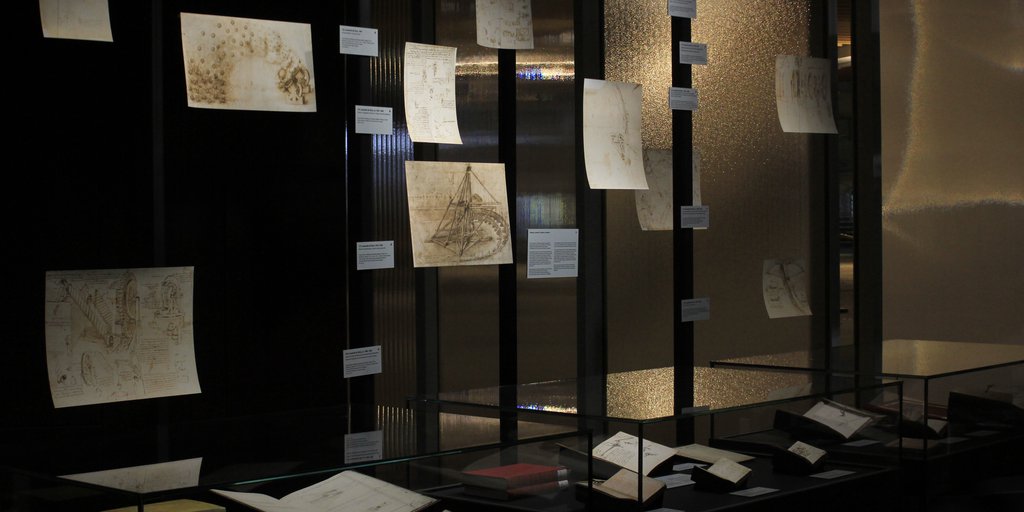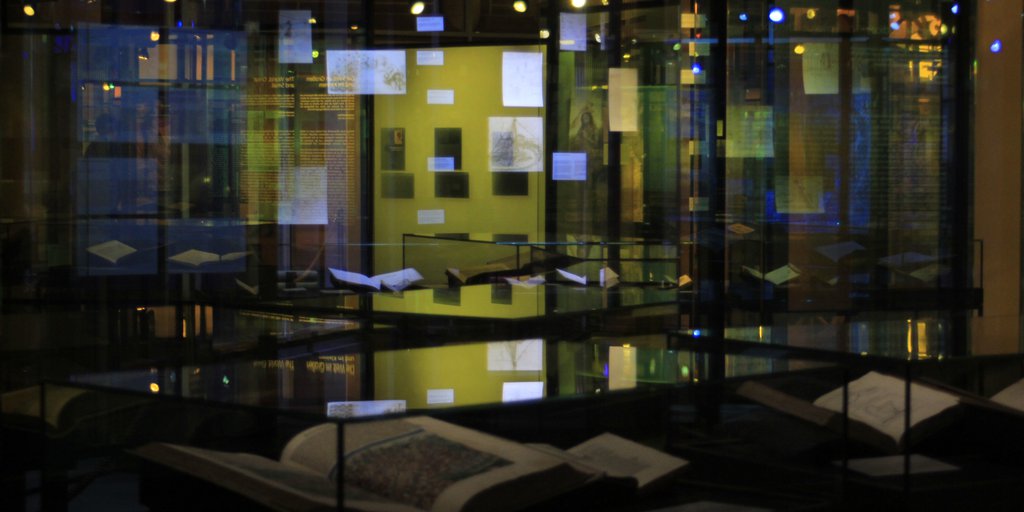
Epilogue: The Codices <
This is a collection without order, compiled from many papers that I have copied here,
hoping to put them in their respective order, according to the subjects they address …
Leonardo da Vinci
Codex Arundel, fol. 1r. Translation: Elizabeth Hughes
Leonardo’s surviving literary estate comprises over 4,000 sheets; a total of 22 volumes of illustrated manuscripts, generally known as codices, still exists today. The material is extremely heterogenous. Alongside pocket-sized sketchbooks with jottings made on the spot purely for his own use, there are large-format clean copies that seem to address an audience. What the volumes have in common is their thematic diversity, and all show traces of continual use and revision. At his death, Leonardo left the volumes to his collaborator and heir Francesco Melzi (1491/92–1567). Melzi’s heirs sold a large part of this legacy to the sculptor Pompeo Leoni (ca. 1533–1608). In 1637 the collector Galeazzo Arconati (before 1592–1649) donated several of these manuscripts to the Biblioteca Ambrosiana in Milan. They ultimately reached Paris as part of Napoleon’s spoils of war where most of them are still kept today—fortunately mostly in their original binding. Other codices took entirely different paths—though under similarly dramatic circumstances.
Codices <
 | 110.
Cast shadows ca. 1490–1491 |

Although it also covers other topics as well, this early manuscript is generally called Leonardo’s Book of Light and Shade. The theme of shadow projection attests to his intensive theoretical study of the tradition of optical treatises (72 ■), and at the same time has concrete implications for his practical artistic production. Compared with the other notebooks, this one stands out for its relatively large format, the clean writing, and the carefully made drawings, suggesting it was intended for publication. The expositions are based on Leonardo’s systematic experiments with an artificial light source, a candle. He focuses particularly on the color, intensity, and layering of shadows cast by cylindrical or spherical objects.
References
Bambach, Carmen C. 2019. Leonardo da Vinci Rediscovered. Vol. 2: The Maturing of a Genius 1485–1506. 4 vols. New Haven / London: Yale University Press, 111–119.
Kaufmann, Thomas DaCosta. 1975. “The Perspective of Shadows. The History of the Theory of Shadow Projection.” Journal of the Warburg and Courtauld Institutes 38: 258–287.
Leonardo da Vinci. 2006. Codice C. Edited by Manlio Brusatin and Vittorio Mandelli. Carte d’artisti 80. Milan: Abscondita.











